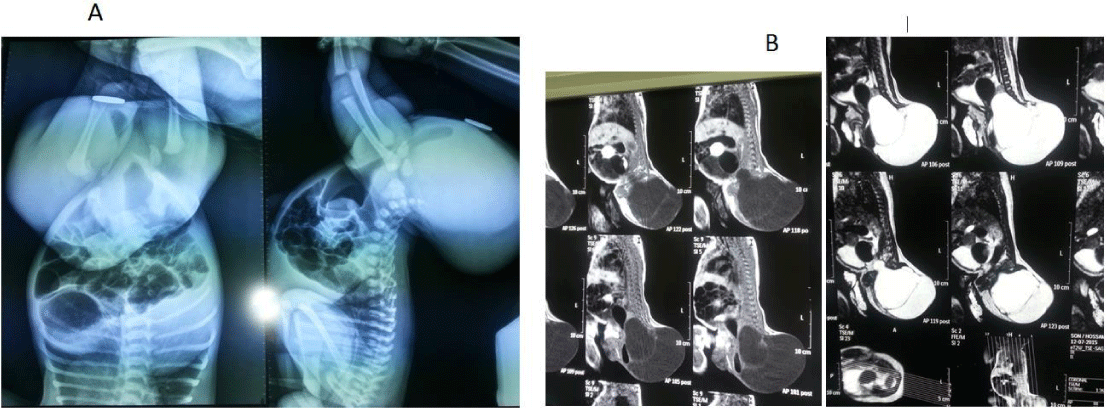Archives of Clinical Gastroenterology
Thrombectomy from superior mesenteric vein in treatment of small intestine gangrene
Ihnatovich I* and Ihnatovich K
Cite this as
Ihnatovich I, Ihnatovich K (2020) Thrombectomy from superior mesenteric vein in treatment of small intestine gangrene. Arch Clin Gastroenterol 6(1): 020-021. DOI: 10.17352/2455-2283.000072Introduction
The traditional definition of tissue ischemia-a decreased level of oxygen deliverability by bloodstream that results in cell hypoxia. Anatomical and functional hindrance to blood flow is the basis of tissue hypoperfusion. Arterial, venous and functional disturbances in blood circulation lead to acute intestinal ischemia. In 85-90 % of cases acute mesenterial ischemia was caused by arterial reasons: thrombosis or embolism. Venous thrombosis is responsible for 10%-15% of acute mesenterial ischemia cases. Hereditary or acquired coagulopathy disorders-deficiency of protein C or АТIII-are at the core of mesenteric veins primary thrombosis. The first publication describing convalescence after resection of necrotic bowel caused by mesenteric vein thrombosis was by Elliot in 1895 [1]. In the most of cases mesenterial ischemia is caused by superior mesenteric vein thrombosis that sometimes extends over portal vein. [2]. The following example shows specific treatment technique for this difficult pathology. The treatment protocol was approved by the University ethics committee (No. 20140451) and patient signed a written consent to surgery.
A 71 year old woman presented to the emergency department with epigastric pain of one day duration, nausea and single vomiting. The cause of pain syndrome was not revealed by laboratory methods, abdominal X-ray, ultrasonography and fibrogastroduodenoscopy. In 24 hours pain syndrome was arrested and ache did not resume; patient was discharged for outpatient treatment. A day later she was hospitalized once again due to recurrence of abdominal pain. On physical examination moderate abdominal distention was observed. Dilated loops of small bowel and moderate amount of liquid in abdominal cavity were detected by repeated ultrasonogram. The spiral CT of abdomen with bolus contrast enhancement was planned in few hours, but the condition of the patient deteriorated. Abdominal pain diminished while peritoneal signs appeared in hypogastric region. Blood pressure was 100/60. On rectal examination blood in stool was detected.
The indications for immediate laparotomy were identified. The laparotomy revealed moderate amount of serohemorrhagic exsudate and hemorrhagic gangrene of small intestine. Intestine wall was edematic, 40 cm distally from Treitz’s ligament part of small intestine was of dark-purple color, with absent peristalsis and hyperemic mesentery. The length of hemorrhagic gangrene was approximatively 1 meter. Resection of necrotic bowel was performed (Specimen 1). Proximal bound of gangrene was within the limits of jejunum therefore it was extremely objectionable to make jejunostomy even for a short period of time. Making anastomosis after bowel resection was rather risky because of edematic bowel wall. Performing of safe primary anastomosis demanded restore blood flow in bowel wall. Having performed section of necrotic bowel, mesentery veins with organized thrombotic masses in them were found. These veins were used as access to superior mesenteric vein system (Figure 1). Thrombectomy from superior mesenteric vein and its distant branches was performed using the Fogarty catheter (Figure 2).
30 minutes after thromboectomy active peristalsis and diminished swelling were observed in the remaining part of small bowl. Diameter of proximal edge remained two times bigger than the distal one. Superior mesenteric artery pulsation was satisfactory, without systolic murmurs over it. Stapled Jejuno-jejuna side-to-side anastomosis was performed, followed by control of haemostasis, lavage, sanation and draining of abdominal cavity. Operational wound was sewed up. Figure 2. shows the operation scheme.
The microscopic picture of specimen #1. Diffuse extravasation and leukocyte infiltration of the bowel wall. The mucosa was necrotic, the serous coat is covered with fibrin and leukocytes. Mesenteric vessels were plethoric. The microscopic picture of specimen #2. Histologic features of thrombus.
Diagnosis after surgery: Segmental venous thrombosis in system of superior mesenteric vein. Hemorrhagic gangrene of small intestine. Peritonitis.
Postoperative period was uncomplicated. Recovery of peristalsis was observed on the second day after surgery, stool of normal color was passed on the 4th day. Post-operation wound healed by primary. Patient received long-term warfarin therapy and had a good quality of life during 5 years follow up.
This clinical case demonstrates the difficulties in diagnosis of mesenteric veins thrombosis until bowel gangrene and peritonitis develops. Moreover, it emphasizes the possibility of surgical thrombectomy from superior mesenteric vein. Trombectomy performs a favorable impact on bowel blood circulation and allows making primary anastomosis after resection. Thrombectomy prevents from progression of thrombosis and bowel necrosis. Thrombosed veins of mesentery of affected bowel, discovered during its mobilization and resection, can be used as access to superior mesenteric vein system. This method of thrombectomy is simple and effective.
- Elliot JW (1895) II. The operative relief of gangrene of intestine due to occlusion of the mesenteric vessels. Ann Surg 21: 9-23. Link: https://bit.ly/34Jts4t
- Acosta S, Bjork M (2014) Mesenteric vascular disease: venous thrombosis. In: Cronenwett J, editor. Rutherford’s vascular surgery. 8th ed. Saunder 2414-2420. Link: https://bit.ly/2zbUc1J
Article Alerts
Subscribe to our articles alerts and stay tuned.
 This work is licensed under a Creative Commons Attribution 4.0 International License.
This work is licensed under a Creative Commons Attribution 4.0 International License.



 Save to Mendeley
Save to Mendeley
